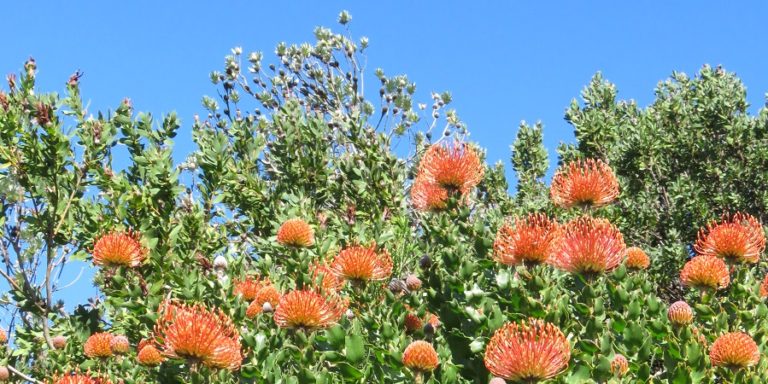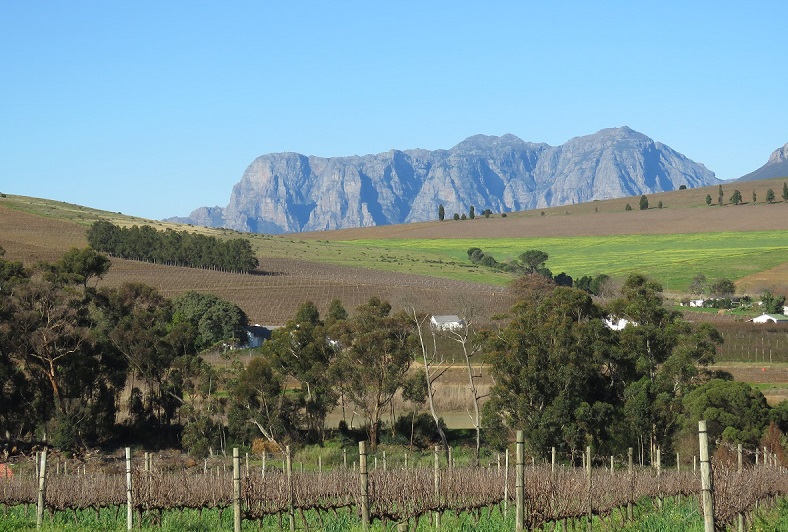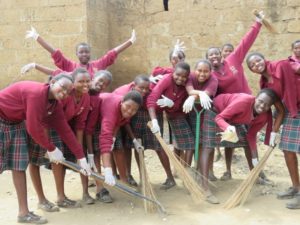
As we move toward the possibility of beating the pandemic sometime this year, I reflected on some events that brought me hope.
Finding Hope Amidst Poverty
In the midst of the scourge of poverty, I observed the power of hope, and the courage, determination and kindness of humans while visiting two African countries, Kenya and South Africa. Reflecting on those lessons gives me hope for 2021 and beyond, something I believe we’re all seeking.
In 2016, my husband and I visited a school in Kenya established to release girls from the grip of poverty, AIDS-related orphaning and a culture that too often slotted girls into marriage or prostitution instead of educating them.
At Caring Hearts High School, in Nguluni, Kangundo, Kenya, I met young women who embraced the opportunity for education and escape from poverty with joy, grit and determination, girls who worked hard to study and excel at the exams that would admit them to higher education. I’ll talk about one of the school’s first graduates later.
After our Kenya visit, my husband and I traveled to South Africa, where we observed the huge gaps in economic conditions in Cape Town and the surrounding areas.

As we wandered the streets of Cape Town, where modern skyscrapers rose up beside Edwardian and Rococo-style buildings, all at the foot of the spectacular Table Mountain, we were often besieged by persistent beggars. I felt the discomfort of not knowing whether to succumb to their pleas or ignore them, very aware of the distance between our privilege and their lives.
Little more than an hour away is the South African wine country, with chic hotels and innumerable wineries that lure wealthy travelers. The contrast between extreme poverty and abundant wealth can be epitomized in a winery where we sampled homemade ice cream paired with their wines. We enjoyed the decadent treat but reflected on the fact that nearly half the population of South Africa falls below the poverty line.
People Helping People
I’ve mentioned before that my husband and I have a propensity to get lost, wherever we are. Before our trip, we spoke with our daughter, who has a friend from Cape Town who ran a clinic in the Cape Town Flats, extraordinarily poor communities on the outskirts of the city. “Whatever you do, don’t go to the Flats, Mom. It’s not safe.”
Guess where our GPS took us!
That day we rented a car at the airport, intending a drive down the peninsula to the Cape of Good Hope. We soon found ourselves in slow, heavy traffic, heading to what must have been a central mall in The Flats. We were acutely aware of the stares from the locals, many of whom walked the streets beside us. We pulled up to a signal on a fairly wide street and I babbled to Mark, “I think if we head left here, we’ll find the route south.”
Expectations Can Change
A pickup bearing two young, large, and muscular black men pulled up beside me. I was in the passenger seat. Laughing, the driver turned down his music and said, “I bet you’re lost.”
I nodded my agreement and again burst out with his infectious laughter. “Where you headed?”
I rolled down my window to better speak with him, hating the nervousness I felt about doing so. “Cape of Good Hope.”
The driver smiled, told me to take a left (Yes! I was right!) and then which turns to take. “You have a nice day, now!” We blushed at our trepidation, waved goodbye to our good Samaritans, and continued south to the Cape of Good Hope.
Working Toward Hope
In January 2018, the world learned that Cape Town, South Africa, was running out of water. City officials announced that strict rationing would begin in a few months, allocating less than a twelfth of the average daily consumption in the United States to Cape Town residents who would be forced to line up each morning for their ration.
Living in Arizona, drought is a reality that shadows us every day, and I felt deep sympathy for the outlook for Cape Town residents.
Cape Town became an ominous harbinger to the rest of the world, and we watched the news, wondering where shortages would strike next. Fortunately, Cape Town’s Day Zero—when rationing would set in—never arrived, and in 2020, rains filled reservoirs.
In the meantime, conservationists started to look at the causes and explore potential solutions to the inevitable water shortages in South Africa and elsewhere as climate change makes itself visible.
Tackling Problems in New Ways
The Nature Conservancy, an environmental organization formed in the 1950s “working to create a world where people and nature can thrive,” * had set up collaborative water funds with nongovernmental groups, government agencies and corporate sponsors in more than 40 cities since 2000. The Greater Cape Town Water Fund, instead of focusing on technology such as filtration plants and wastewater recycling, recognized that restoring the ecosystem in the surrounding mountains could prevent future crises. In “Cliff Hanger,” an article in the Conservancy’s Fall 2020 magazine, writer Amy Crawford describes the effort to rid the delicate ecosystem in the sandstone peaks that surround Cape Town of non-native species such as the acacia, eucalyptus and pine trees that were imported by colonists in the 19th and early 20th centuries.
Studies revealed that within 30 years of removing those water hungry species, the city could squeeze out an extra four months’ worth of water per year, at much less expense. The article* * describes how the project employed female contractors to scale the heights and clear the trees. Planners were addressing not just environmental concerns but those of poverty among unempowered female Cape Town residents. I love this multi-pronged approach!
The project started well, had to pause during the pandemic, but hopefully will continue when lockdown restrictions are eased.
Learning how scientists are working creatively to help nature brace against climate change made me more optimistic about our ability to cope with global warming.

Paying it Forward!
And a letter from a graduate of Caring Hearts High School in Kenya gave me another kind of hope. The young woman, who’d moved from poverty and a life of zero expectations to that of a working medical laboratory scientist, asked the school’s founder, Dr. Vincent Kituku, about setting up an organization of the school’s graduates to help others in need.
Paying it forward pays off. Dr. Kituku’s faith and investment, along with those of the school’s many donor and benefactors, is creating a community of educated and empowered young women who may well improve the lives of many in their country.
Investing in the environment, investing in people, exploring innovative ways to address the difficulties our world faces—all of these give me hope.
Have you witnessed actions or events this past year that give you hope for our future? I’d love to hear about it.
